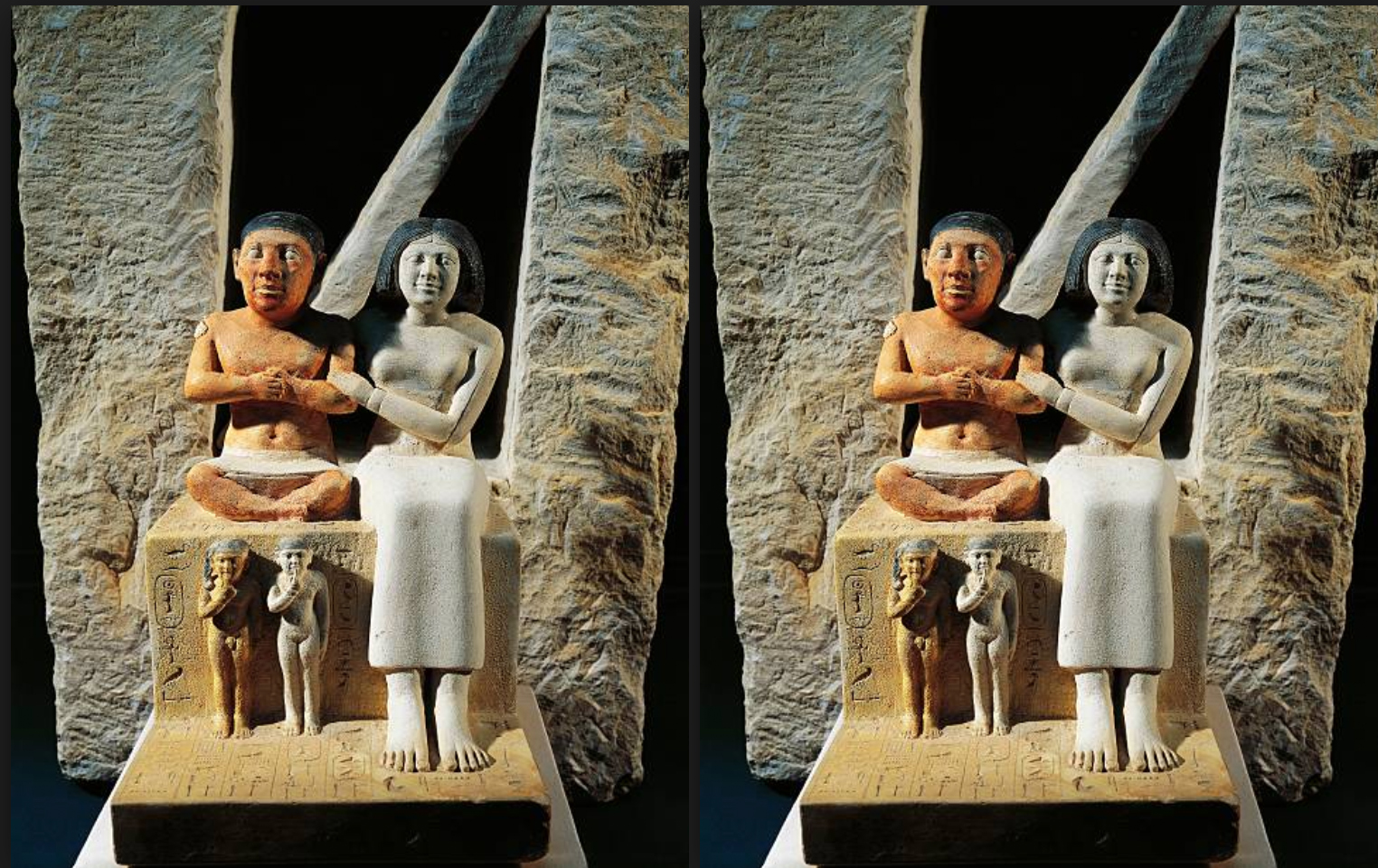What Comes After Dopey?
People with disabilities have not typically decided how they would be portrayed in art. Instead, artists and storytellers have tended to use various disabilities to convey strangely unfair stereotypes about physical challenges. Dwarfism is the obvious one, it continues to be seen by some people as the funny disability. People with the genetic condition not only look different but they they also walk differently and move differently. And for whatever cruel reasons it's that difference that makes some people laugh. The cheap gag that keeps on giving.
But this has not always been so, perhaps. The first dwarf to be depicted in art was Seneb, a real person who served as a high-ranking court official in the Old Kingdom of Ancient Egypt, around 2520 BC. A painted limestone sculpture of him and with his family was rediscovered in 1926 and now resides in the museum at Cairo. Irregardless of his body Seneb was a person of considerable power, wealth, and religious title. This and other texts indicate that Egyptian society advocated the acceptance and integration of those with physical and mental disabilities.
Fast forward to 20th Century Western culture and the most famous depiction of dwarfism comes from Walt Disney. In the first full length animated motion picture Snow White and Seven Dwarfs the dwarfs are mostly comic entertainment, each named after their personality type - Doc, Grumpy, Happy, Sleepy, Bashful, Sneezy, and Dopey. The other big depiction from that period came from JRR Tolkien. Dwarfs, or as he called them 'dwarves' are even more so mythical creatures, completely apart from humans, like orcs, elves, and hobbits. Both these depictions have their roots in German folklore.
In 2018 the most successful story in the world is the A Song of Ice and Fire series created by George RR Martin and adapted for television as Game of Thrones by David Benioff and DB Weiss at HBO. The books themselves are sold in the fantasy section but the reason why they've sold so well is, in part, because Martin subverts the genre. Martin writes about dragons, and magic, and also about dwarfs. But George RR Martin's dwarfs are not merely human shaped entities dwelling inside mountains smithing away and hoarding gold. Martin's dwarfs are humans with the physical disability called dwarfism. Tyrion Lannister is a member of the wealthiest and most powerful family in Westeros (not dissimilar to Egypt's Seneb). Martin's gets meta in A Storm of Swords, addressing the usual tropes about dwarfs in entertainment. At his own wedding King Joffrey introduces a mock play. All the players are dwarfs. Joffrey mockingly tries to coerce his uncle Tyrion into joining them. Tyrion carefully evades this demand, but at the same time insults Joffrey, which draws more genuine laughter from the crowd.
The task of art is to uncover things that are not payed attention to and to then provoke responses that are outside of everyday experiences. Historically art has been exceptionally mean to people with dwarfism, categorising their genetic condition into something as both mythological and comical. The A Song of Ice and Fire saga is one of the finest efforts in art to re-humanise a part of society that has previously been so successfully ridiculed by the same genre. This coupled with Peter Dinklage's screen portrayal of Tyrion has successfully shifted the way that millions of people think, at least superficially, about people who just happen to be dwarfs.
Tyrion is not a fantasy dwarf, he's a regular person with dwarfism inside a fantasy story. He suffers the same way many people facing physical challenges do. He is referred to by others as the 'imp' or the 'halfman'. Because of his body he is seen by everyone, including his own father, as being less than everyone else. Martin conceived the character as being both the most ugly person in the story but also the most intelligent. And in that way there is the deepest tragedy. Because, through his smartness, he is acutely aware of how others see him and why they dislike him and how no matter what he does he'll still be just a dwarf to them. But not to the reader of the novels nor to the TV viewers. Those people see him for his mind and his actions. And to them he is a heroic figure in the most human sense.
